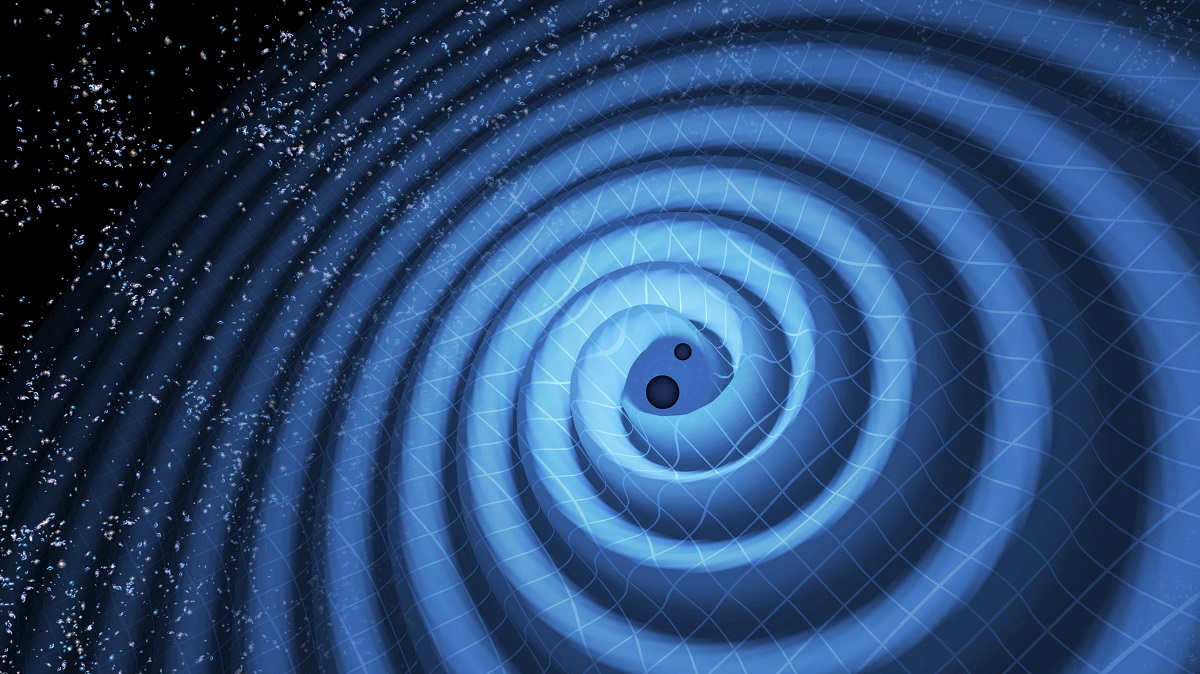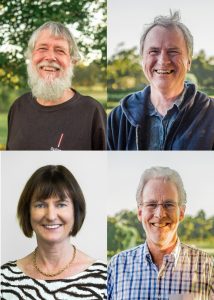In 2015, astronomers shook the world of science when they made the first ever detection of gravitational waves. This feat – which won them the Nobel Prize – recorded the ripples in spacetime created by a colossal crash between two orbiting black holes.
This year, four Australian scientists were awarded The Prime Minister’s Prize for Science due to their contribution to gravitational waves research. Find out more about gravitational waves and Australia’s contribution to this research in this article and video for Year 7 and 10 Earth and Space and Physics students.
Word Count / Video Length: 700 / 3:32 mins

But what exactly are gravitational waves?
Gravity is a dominant force in our lives, even if we forget to notice it most of the time. Back in the 1600s, Isaac Newton proposed that gravity is an attraction between two bodies. The more massive the object, the greater the force of attraction. This, Newton said, is what keeps you firmly standing on the Earth and keeps the planets in orbit around the Sun.
But in the early 1900s, Albert Einstein proposed an even wackier idea. His theory of general relativity uses a bit of shrewd maths to show that matter actually causes the fabric of spacetime to warp – like balls sitting on a rubber sheet – and this distortion is felt as gravitational influence.
It’s tricky to get your head around, but this means that as an object moves, spacetime changes “around” the object. If an object accelerates, it can send out ripples in all directions through the fabric of the universe, like a stone dropped in a pond. These ripples are known as gravitational waves.
The more massive the object, the bigger the waves it can send out. Extremely violent events – like the crashes between two black holes or two neutron stars – can send out massive shockwaves.
But as these waves move through space, they grow smaller and smaller. By the time they reach Earth after travelling billions of light-years, the waves can be thousands of times tinier than the nucleus of an atom!
How do we pick up these minuscule signals from the cosmos?

Even though Einstein predicted gravitational waves in 1916, it took nearly one hundred years for scientists to directly detect them. To do so, they built the most precise measuring device ever. This sensitive detector, known as LIGO (Laser Interferometer Gravitational-wave Observatory), uses clever arrangements of mirrors and lasers to pick up very tiny vibrations from the universe.
The first ever gravitational wave we detected was caused by the cosmic clash between two black holes, which are massive objects formed from the corpses of exploded stars, and happened 1.3 billion years ago. These black holes had been trapped in each other’s gravity, orbiting each other for years and years, until finally they slammed into each other and sent shockwaves out through the fabric of spacetime.
This detection was a big deal for our understanding of black hole binaries (pairs), because there’s no other way to observe them except for the gravitational waves they emit.
What’s next for gravitational wave astronomy?
Since that first detection, nearly 50 more pairs of black holes and neutron stars have been detected, and each one teaches us more about these bizarre and mysterious objects. The process is kind of like the process of discovering a new species. If a field biologist discovers a single specimen of some rare and exotic animal, they can’t tell much about the species in general. But as they find more and more examples, they can understand where the species comes from, how it behaves and generally how it lives.
It’s the same for gravitational wave astronomers as they discover black holes and neutron stars: the more examples we observe out in the universe, the more we can understand them.
The field of gravitational wave astronomy is still very young but it’s growing fast, opening up a new era of discoveries. Gravitational waves are now just another way for astronomers to “see” the universe, adding to the data they collect from telescopes operating across the electromagnetic spectrum.
As gravitational wave detectors are upgraded to become more sensitive, we will be able to see further away and discover many more interesting objects. There are even plans for next-generation detectors that will be able to see to the very edge of the Universe!
How has Australia contributed?

Emeritus Professor David Blair (The University of Western Australia), Professor David McClelland (Australian National University), Professor Susan Scott (Australian National University) and Professor Peter Veitch (The University of Adelaide) from the Australian Research Council Centre of Excellence for Gravitational Wave Discovery (OzGrav) were critical contributors to the first direct detection of gravitational waves – a ground-breaking discovery in the world of physics. They have received the 2020 Prime Minister’s Prize for Science in recognition of their achievement.
The 2015 discovery was made possible by the decades of pioneering work and innovation of the team as part of the Laser Interferometer Gravitational-wave Observatory Scientific Collaboration (LSC).
The impact of their discovery has been immense; opening up previously unknown parts of the Universe such as hidden black holes, understanding the origin of gamma ray bursts (and with the potential to discover how supernovae explode), and to even peer back to the beginning of time at the Big Bang. The magnitude of the team’s work was recognised in 2017 when the Nobel Prize in Physics was awarded to the three American founders of the LIGO project.
The legacy of the team’s combined research ensures that Australia is now ‘front-and-centre’ in exploring this brand-new window into the Universe.
Credit: Australian Academy of Science
Written by Lauren Fuge, science journalist at The Royal Institution of Australia.
Login or Sign up for FREE to download a copy of the full teacher resource





